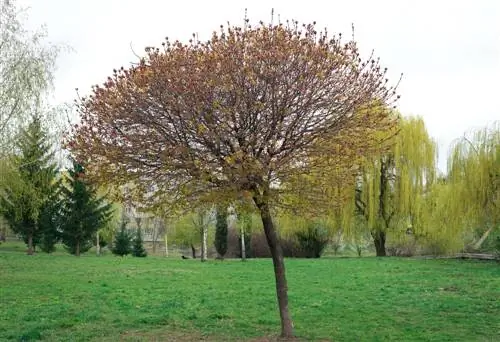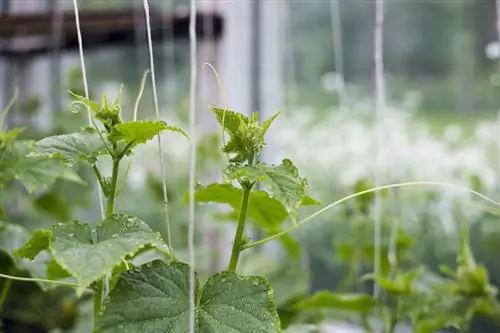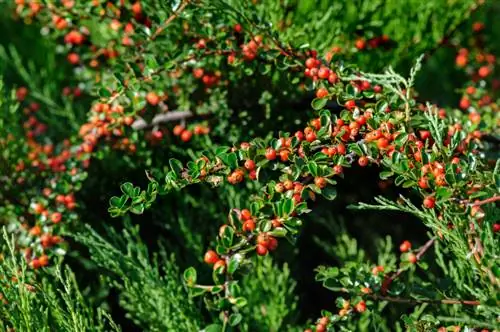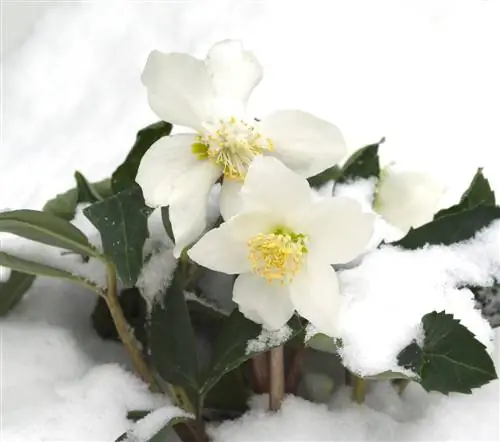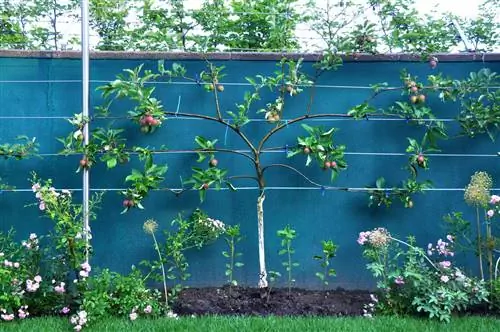- Author admin [email protected].
- Public 2023-12-16 16:46.
- Last modified 2025-06-01 06:02.
There is a wide range of crown shapes for ornamental and fruit trees for every garden. This guide will introduce you to the most popular forms of parenting with tips on their special advantages.

What crown shapes are there for trees?
Popular crown shapes for ornamental trees are natural, loose-open, cascade crown (hanging crown) and spherical crowns. Round crowns, hollow crowns (funnel crowns), spindles with conical crowns and columnar crowns are suitable for fruit trees. Each crown shape has its own advantages and suits different tree species and garden conditions.
The best crown shapes for ornamental trees
So that the new house tree fits harmoniously into the overall look of the garden, important criteria need to be decided before purchasing. A majestic standard tree with a sprawling crown is oversized for the front garden. More delicate tree shapes with geometric crown shapes, which look lost in the large garden, fit better here. We have put together the best crown shapes for ornamental trees with tips for the right tree species for you here:
Natural, loose-open crown
Natural crown shapes are very popular in large gardens. As a shade provider for cozy seating or a climbing tree for little explorers, they also provide living space and food for numerous animals. Pruning care is limited to an occasional thinning cut so that the crown thrives with light and dense leaves. The crown shape is suitable for the following species and varieties:
- Ash maple 'Flamingo' (Acer negundo)
- Gold Acacia 'Friesia' (Robinia pseudoacacia)
- Rotthorn ‘Paul’s Scarlet (Crataegus laevigata)
Cascade crown, hanging crown
Are you looking for an impressive crown shape? Then we would like to recommend the Cascade Crown to you. This is a crown refinement that looks wonderful as a solitaire in the middle of a spacious lawn. The height of the tree is determined in advance by the position of the grafting point. This offers the gardener special planning security for creative garden design. Popular tree species for hanging crowns are:
- Weeping Birch 'Yougii' (Betula pendula)
- Hanging willow 'Tristis' (Salix alba)
- Weeping ash 'Pendula' (Fraxinus excelsior)
Ball crowns
House trees with spherical crowns form the harmonious crown shape without time-consuming pruning. Gardeners with limited time will appreciate that pruning care is limited to thinning out the crown every 2 to 3 years. The following varieties look decorative in small gardens and front gardens:
- Ball trumpet tree 'Nana' (Catalpa bignonioides)
- Spherical maple 'Globosum' (Acer platanoides)
- Gumball 'Gumball' (Liquidambar styraciflua)
Proven crown shapes for fruit trees - practical and productive
In private fruit cultivation, home gardeners strive for crown shapes that are productive, easy to cut and beautiful to look at. The spectrum of options extends from the stately standard tree with a round crown to the graceful spindle tree with a conical crown and slender columnar trees for keeping in containers. You can get to know the most popular crown shapes below:
Round crown
A fruit tree with a round crown consists of a trunk and a crown, which is made up of the trunk extension and three leading branches. It takes between 4 to 15 years to complete the training of a round crown. Apple, pear and sweet cherry are the classic fruit trees that are suitable for cultivation with this crown shape. Please only choose this option if at least 25 square meters of space is available.
Hollow crown, funnel crown
A special variant of the round crown is the hollow crown. After about 3 years, the trunk extension is removed so that more light and heat can reach the fruit branches. The framework consists of four side branches that are arranged in a circle. If you are considering growing light and heat-requiring fruit species, such as apricots or peaches, a funnel crown is highly recommended.
Spindle with tapered crown
Since private fruit cultivation areas have become smaller and smaller, spindle trees have been on the rise. Thanks to weak rootstock, the small trees are content with an area of 4 square meters. The framework consists of a central shoot from which flat side branches branch off, which carry the valuable fruit wood. Regular pruning measures maintain an advantageous cone shape so that the lower branches are also supplied with light and do not age. In addition to the small space requirement, the spindle tree with a conical crown scores points with an early yield phase that begins after 2 years.
Pillar Crown
Thanks to the columnar crown, balcony gardeners no longer have to go without harvesting juicy fruits from their own cultivation. In principle, the entire fruit tree consists of a slender crown with a single central shoot from which the short fruit wood sprouts. With a height of 200 to 300 centimeters and a width of 30 to 50 centimeters, columnar trees are perfect for keeping in containers.
Tip
Small fruit trees on weakly growing rootstocks are the ideal candidates for espalier training. This classic crown shape is very popular with home gardeners to use sunny facades or pergolas to grow fruit. Apples and pears in particular will give you a lot of joy as espalier fruit. Peaches, sour cherries and nectarines are less suitable due to their short-lived fruit wood.

